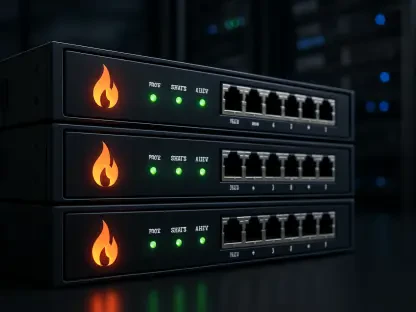Rising breach costs, sprawling multi-cloud estates, and fast-moving AI deployments have pushed cloud risk to a pace that alert queues and after-the-fact tickets rarely match, forcing security leaders to weigh whether detection-centric tooling can continue to anchor modern defense. Into that tension stepped a new entrant with a prevention-first thesis, promising to stop risky changes before they ever touch production systems. The bet is that secure-by-design guardrails, embedded directly into change workflows, can compress exposure windows, curb misconfigurations, and reduce firefighting without throttling developer velocity. Instead of chasing noisy signals after releases, the model tests, models, and enforces policy at commit time and gate stages, taking advantage of native cloud controls to keep resilience gains aligned with delivery cadence.
A Turning Point In Cloud Defense
Capital, Complexity, And The Pivot
Blast Security emerged from stealth with a $10 million seed round co-led by 10D and MizMaa Ventures, a notable wager on proactive defenses at a moment when multi-cloud sprawl and AI services expand the blast radius of everyday changes. Investors read the signal plainly: cost and complexity demand prevention over perpetual triage. That context matters because detection stacks have multiplied alerts without reliably shrinking risk, especially when ownership is distributed across platform, SRE, and application teams. By contrast, a preemptive posture aims to codify policy before runtime, using cloud-native controls to enforce intent. The proposition is not merely fewer alerts but fewer bad states, achieved by evaluating change sets against modeled outcomes and halting risky paths early.
Design, Guardrails, And The Team Behind Them
At the core is what the company calls a unified prevention fabric—guardrails that evaluate and enforce every cloud change in advance, spanning identity, network, data, and workload layers. Instead of bolting on after deployment, the platform plugs into CI/CD, IaC, and change-management checkpoints, aligning with platform engineering practices already in place. The founders, veterans of Solebit and former Israeli Defense Force specialists, shaped the approach while stewarding a national cloud security initiative, concluding that controls must operate at cloud-native speed. That pedigree leads to an engineering-led bias: measurable risk reduction, minimized manual work, and production stability. Early deployments reportedly prevented over 90 percent of risk while limiting disruption, a claim that, if sustained, would mark a practical, not rhetorical, shift.
From Theory To Practice
Preemption, Pipelines, And Outcomes
The operational logic leans on a few hard-earned lessons: reactive tools break down at scale, identity and configuration drift compound silently, and remediation rarely keeps pace with release velocity. Prevention turns that equation around by front-loading analysis and enforcement. Changes are tested and modeled against policy, then automatically corrected or blocked using native capabilities rather than bespoke agents, preserving performance and keeping ownership with the teams closest to the code. For enterprises wrestling with headcount ceilings, the ability to lower risk without expanding security teams marks a strategic win. Moreover, plugging controls into pipelines creates consistent governance that travels with workloads across accounts, regions, and clouds, containing impact while preserving autonomy for builders.
Metrics, Governance, And The Road Ahead
The next steps for enterprises had been clear: shift success metrics from alert closure to prevented exposure, codify policies as versioned artifacts in IaC repositories, and wire pre-deployment checks into existing delivery gates. Platform teams could have standardized golden paths that encoded identity least privilege, network segmentation, and data access patterns, while product teams owned exceptions via tightly-scoped approvals. Board reporting should have highlighted avoided incidents and reduced mean time to risk, not just mean time to detect. If prevention continued to prove out, security portfolios would have consolidated around policy engines and native-control enforcement, reserving detection for residual risk, unknown unknowns, and continuous validation rather than day-to-day defense.









